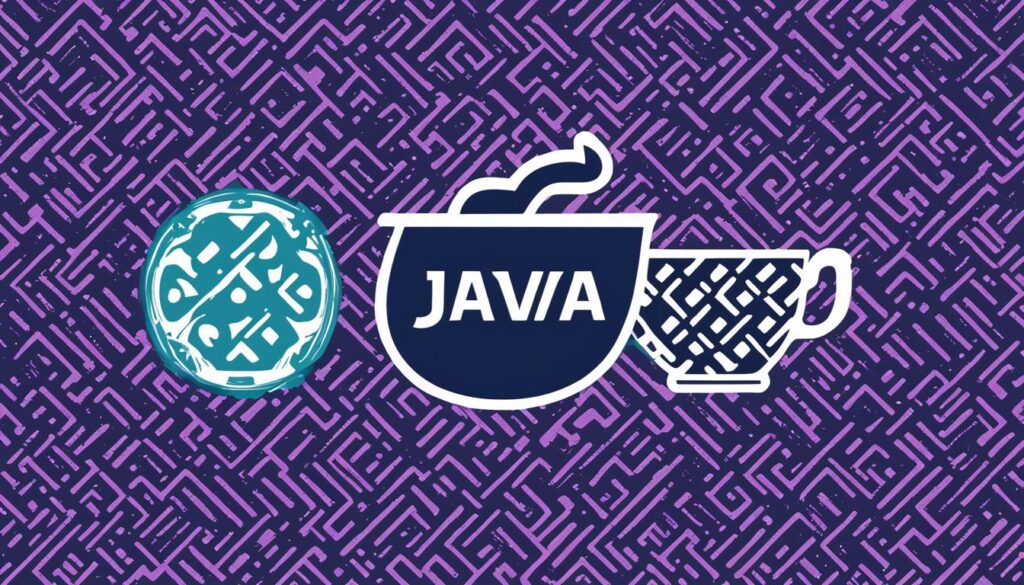In the world of technology, choosing the right programming language is crucial. It can greatly affect a project’s success. Developers often face the task of picking the best language. They must consider factors like performance, scalability, and ease of use.
But have you ever thought, “What are the true advantages and disadvantages of the most popular programming languages?”
This article will show you the good and bad sides of popular programming languages. You’ll learn how to pick the right one for your project. We’ll cover everything from Python’s versatility to the C-family languages’ power.
Key Takeaways
- Understand the fundamental aspects of programming languages and their impact on project success.
- Discover the strengths and weaknesses of popular languages like Java, JavaScript, Python, PHP, and the C-family.
- Analyze the advantages and disadvantages of various programming languages, including performance, scalability, ease of use, and community support.
- Explore the cross-platform compatibility, security, learning curve, and cost-effectiveness of different languages.
- Gain the necessary insights to choose the right programming language for your specific project requirements.
Introduction to Programming Languages
Programming languages are key to the digital world. They let us talk to computers and make them do lots of things. These languages give a set of rules that tell computers what to do, from simple math to complex software.
What are Programming Languages?
Programming languages are special languages with their own rules and syntax. They let developers write code that computers can understand. This way, our ideas turn into instructions that computers can follow. There are many programming languages, each with its own strengths and uses.
How Many Programming Languages Are There?
- There are over 700 programming languages out there, each for different challenges and projects.
- Popular languages include C, Python, C++, Java, and JavaScript. Each one is made for specific needs and uses.
- New languages keep coming as technology changes and new needs arise. This shows how programming languages evolve with the digital world.
Knowing about programming languages and how they change is key for developers. It helps us pick the right tools for our projects and goals.

“Programming is the art of telling another human being what one wants the computer to do.” – Donald Knuth, renowned computer scientist and author.
Exploring Popular Programming Languages
Java
Java is a class-based and object-oriented programming language. It’s a key player in software development. It’s known for its versatility, ability to run on different platforms, and strong security features. Java is great for making a wide variety of applications, like mobile apps, web apps, and big software.
But, Java’s complex syntax and need for more memory might be downsides for some developers.
JavaScript
JavaScript is a dynamic language that’s vital for web development. It started for client-side scripting but now helps with server-side tasks, mobile apps, and games. Developers love it for being easy to use, having a big community, and making interactive web pages.
However, it can be tricky to work with across different web browsers and might be hard to learn for complex projects.
The PYPL research shows top web development languages are JavaScript, PHP, Ruby, and TypeScript. In 2022, programming jobs grew by 23.5%, with software programmers earning about $120,200 a year on average.
| Programming Language | Number of Available Jobs | Average Annual Salary |
|---|---|---|
| SQL | 1,248,972 | $110,000 |
| Python | 1,049,041 | $120,700 |
| Java | 784,622 | $124,800 |
| JavaScript | 671,436 | $117,100 |
Looking into programming languages, Java and JavaScript each have their special places in the software world. They have their pros and cons but are still in high demand. This makes them crucial in today’s tech world.

programming languages advantages and disadvantages
Today, over 700 programming languages are in use, showing how fast the tech world is changing. Each language has its own strengths and weaknesses. Knowing these helps us pick the best language for our projects.
Advantages of Programming Languages
One big plus of programming languages is they work on many platforms. Languages like Java and Python run on different operating systems. This makes them versatile and easy to use across various devices.
Another big benefit is the reusability of code. Many languages have big libraries and frameworks that save developers time. This is especially useful for tasks like web development and artificial intelligence.
Programming languages also have strong community support. This means there are lots of resources, tutorials, and forums for developers. Languages like Python and JavaScript have big communities that help them grow and improve.
Finally, programming languages focus on security. They have built-in encryption and secure coding practices. This helps protect applications from threats.
Disadvantages of Programming Languages
Programming languages have their downsides too. One big issue is performance. Some languages, like those easy to use, might not be as fast as others like C++ or Rust.
Another problem is the learning curve. Languages like C++ and Rust need a lot of knowledge about memory and syntax. This can make them hard for beginners.
Some languages also have cross-platform compatibility issues. This means apps made in one language might not work on other platforms. This is a problem for developers who want their apps to run everywhere.
Lastly, the cost of using some programming languages can be high. While many are free, some require licenses or special tools. This can increase the cost of a project.
Knowing the good and bad of programming languages helps us choose the right one for our projects. By looking at the language’s features, performance, support, and cost, we can make smart choices. This ensures our projects succeed.
Python: A Versatile Language
Python has become very popular, especially in data science, machine learning, and artificial intelligence. It was created in 1991 by Guido Van Rossum. Python is now one of the top programming languages, growing fast. It’s loved for its easy syntax, big library support, and working on many platforms. This makes it great for web development, making desktop apps, and scientific computing.
Applications of Python
Python is used in many areas because of its flexibility. It’s used in web frameworks like Django and Flask, and in data science with NumPy, Pandas, and Scikit-Learn. It’s also used in IoT, graphic design, image processing, games, and more. Python is even used in education and for making operating systems.
Pros of Using Python
- Simplicity and readability: Python’s syntax is easy to understand and write, making it good for all levels of programmers.
- Extensive library support: Python has many third-party modules and libraries, offering a lot of functions for different tasks.
- Cross-platform compatibility: Python works well on different operating systems, making it easy to develop and deploy projects.
- Open-source and community-driven: Python is open-source and has a big, active community, which means it keeps getting better and has lots of support.
Cons of Using Python
- Performance limitations: Python might be slower than languages like C or C++ for some tasks.
- Memory management issues: Python’s dynamic typing and high-level abstraction can cause memory problems in big projects.
Even with these downsides, Python is still a versatile and strong language. It’s widely used in many fields, including data science, machine learning, artificial intelligence, and web development.
Web Development Languages
In the world of web development, many programming languages have come to the forefront. PHP and HTML/CSS are two key languages used for building websites and web applications.
PHP: A Versatile Scripting Language
PHP is a scripting language used for dynamic websites and applications. It’s easy to use, works on many platforms, and connects well with databases. PHP programming language powers sites like Wikipedia, Etsy, and WordPress, showing its strength and flexibility.
PHP has faced issues with security, like SQL injection. Yet, it works well with HTML, making it a key tool for web development. PHP applications include content systems and e-commerce sites, proving its wide range of uses.
HTML and CSS: The Foundation of Web Design
HTML and CSS aren’t programming languages but are crucial for web pages. HTML sets the structure and content, while CSS styles and presents the page. Together, they’re vital for making websites look good and work well.
HTML and CSS are well-supported and have a big community. They’re simple and flexible, making them essential for web development.
In summary, web development uses many languages, each with its own benefits and drawbacks. From the versatile PHP programming language to the foundational HTML and CSS, developers have many tools to create beautiful and functional websites and applications.
C-Family Languages: Power and Versatility
In the programming world, the C-family languages like C, C++, and C# are top choices for their power, versatility, and speed. These languages have been key in shaping software development. They are still vital in today’s tech world.
C/C++
C is a foundational language in the C-family, known for its general-purpose use. It’s often used for system-level tasks, like making operating systems and device drivers. Its direct access to hardware and efficient memory handling make it great for high-performance tasks. This includes video games, scientific software, and embedded systems.
C++ builds on C’s strengths by adding object-oriented programming. This lets developers create complex and advanced software.
C#
Microsoft created C#, a modern, object-oriented language for the .NET framework. It’s ideal for building Windows apps, web services, and mobile apps. C# works well with the .NET ecosystem, offering features like garbage collection and LINQ.
The C-family languages might be harder to learn than some others. Yet, their performance, control over system resources, and wide use make them crucial in software development. They are a powerful and versatile choice for developers in various fields.
 Gmrxe Entertainment and Information
Gmrxe Entertainment and Information





i think the piton is number 1